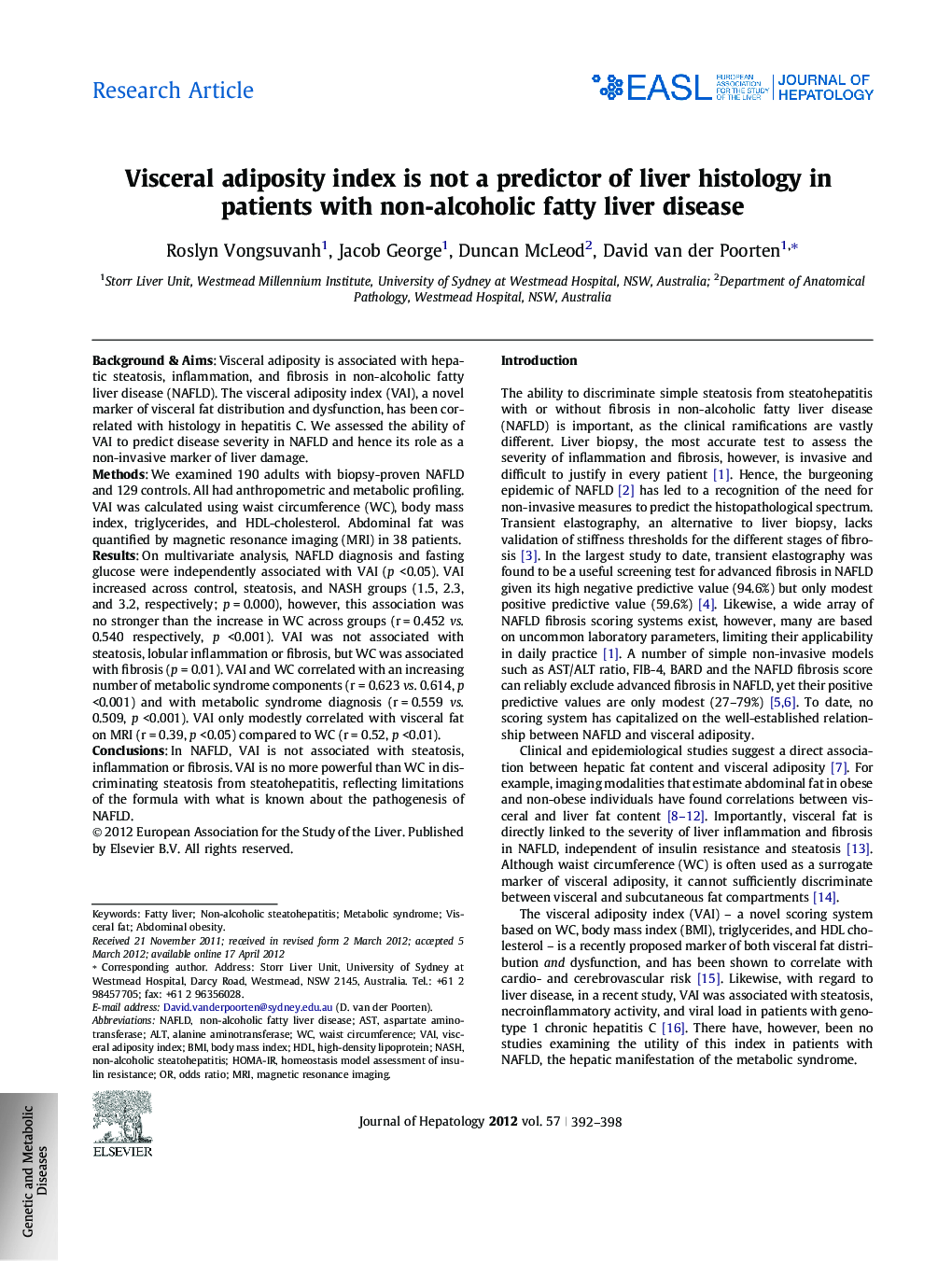| Article ID | Journal | Published Year | Pages | File Type |
|---|---|---|---|---|
| 6106668 | Journal of Hepatology | 2012 | 7 Pages |
Background & AimsVisceral adiposity is associated with hepatic steatosis, inflammation, and fibrosis in non-alcoholic fatty liver disease (NAFLD). The visceral adiposity index (VAI), a novel marker of visceral fat distribution and dysfunction, has been correlated with histology in hepatitis C. We assessed the ability of VAI to predict disease severity in NAFLD and hence its role as a non-invasive marker of liver damage.MethodsWe examined 190 adults with biopsy-proven NAFLD and 129 controls. All had anthropometric and metabolic profiling. VAI was calculated using waist circumference (WC), body mass index, triglycerides, and HDL-cholesterol. Abdominal fat was quantified by magnetic resonance imaging (MRI) in 38 patients.ResultsOn multivariate analysis, NAFLD diagnosis and fasting glucose were independently associated with VAI (p <0.05). VAI increased across control, steatosis, and NASH groups (1.5, 2.3, and 3.2, respectively; p = 0.000), however, this association was no stronger than the increase in WC across groups (r = 0.452 vs. 0.540 respectively, p <0.001). VAI was not associated with steatosis, lobular inflammation or fibrosis, but WC was associated with fibrosis (p = 0.01). VAI and WC correlated with an increasing number of metabolic syndrome components (r = 0.623 vs. 0.614, p <0.001) and with metabolic syndrome diagnosis (r = 0.559 vs. 0.509, p <0.001). VAI only modestly correlated with visceral fat on MRI (r = 0.39, p <0.05) compared to WC (r = 0.52, p <0.01).ConclusionsIn NAFLD, VAI is not associated with steatosis, inflammation or fibrosis. VAI is no more powerful than WC in discriminating steatosis from steatohepatitis, reflecting limitations of the formula with what is known about the pathogenesis of NAFLD.
